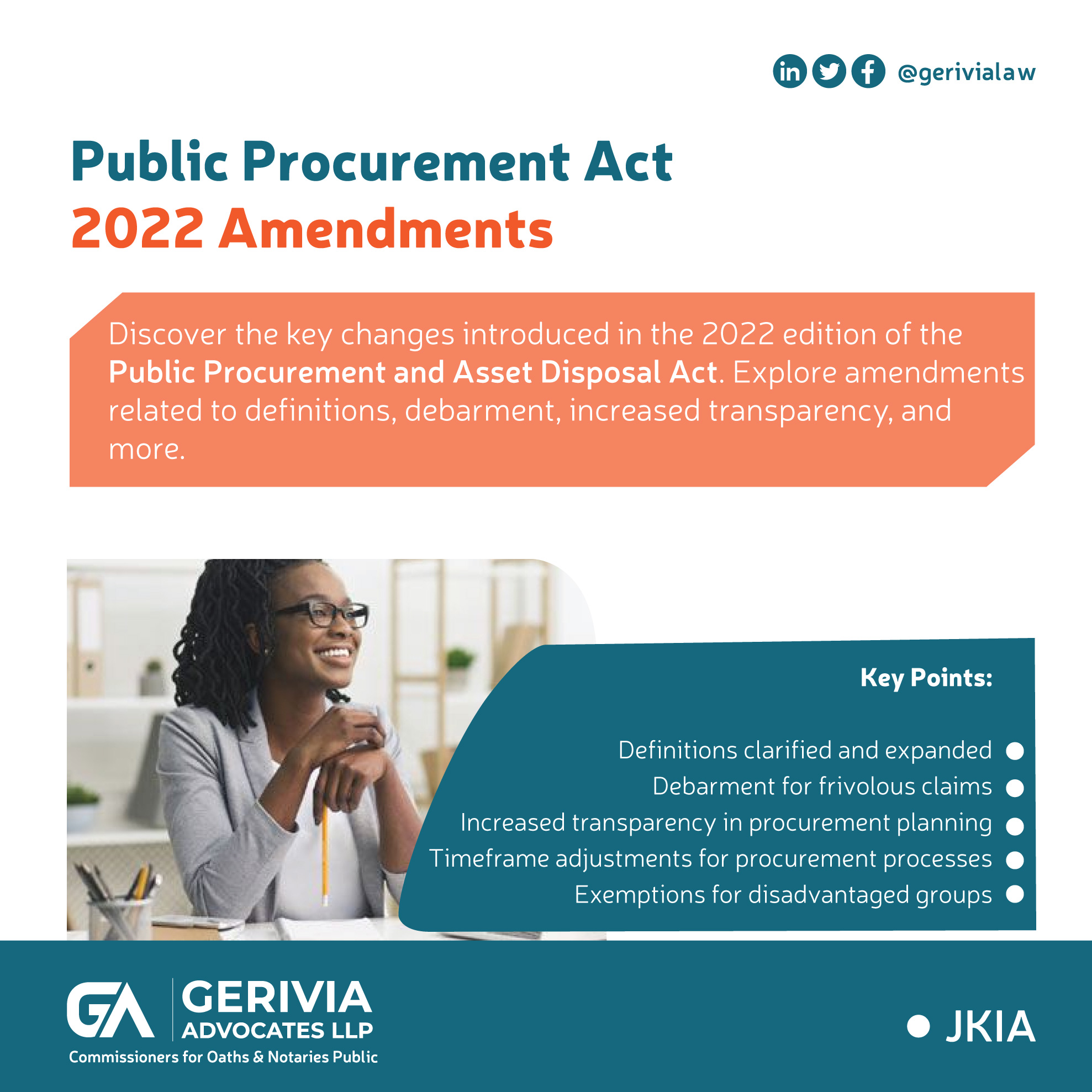General Background
According to the Annual Accident Report by the National Transport and Safety Authority (NTSA) for the financial year 2018/2019, there were a total of 3,409 lives lost on Kenyan roads as at 30th December, 2019 compared to 3,004 lives during a similar period in the previous year.
These numbers are in line with the statistic that an average of 3,000 lives are lost in Kenya annually as a result of Road Traffic Accidents (RTAs). The Association for Safe International Road Travel has reported that twice the number of these victims are permanently disabled from these accidents.
The Article “Pattern of pedestrian injuries in the city of Nairobi: implications for urban safety planning” by Ogendi, J., Odero, W., Mitullah, W., & Khayesi on the pattern of pedestrian deaths on our roads states that the cost to the Kenyan economy from Road Traffic Accidents is estimated at Kshs. 14 billion per year. This is not inclusive of the loss of life and the emotional loss suffered by families every year. Road safety is therefore gaining an ever-increasing focus from both the Kenyan public and government at all levels. The government and other actors involved in road safety are looking at reducing our road death toll through a range of road safety initiatives.
Despite the formation of the NTSA, road safety is still a major problem in the country.
Staggering Effect of RTAs on the Economy
These RTAs have a huge impact on our economy, with the loss and disability of human workforce and heavy financial burden on family members who have to spend huge sums of money in medical care for the injured survivors.
As mentioned by Hezron Mogambi and Florence Nyakeri in their Article “Media Priming of Road Traffic Accidents in Kenya: Praxis, Patterns, and Issues”, the World Health Organization estimated that Kenya lost 4 billion US Dollars annually due to road traffic fatalities. Given that our GDP in 2012 was 31.23 billion US Dollars, this means that RTAs accounted for an 11 percent estimated loss of the GDP.
It is those staggering numbers, amongst other reasons, that led to recent mitigating steps by the Government such as the introduction of alcohol consumption tests for drivers and even a ban on night travels for Public Service Vehicles (PSVs) in a bid to reduce PSV related fatalities.
This was only after the World Health Organisation (WHO) Global Status Report on Road Safety which reported that one third of all fatalities in Kenya’s road traffic incidences are passengers, many of whom are killed in what was termed as unsafe forms of public transportation. While much success has been drawn from the measures highlighted above, more can be done to improve the safety of our roads and limit the fatalities suffered.
These grim statistics and our daily scaring or traumatic experiences as users of Kenyan roads is what inspired the Gerivia Advocates LLP-Road Safety Series (RSS) so as to add traction to the existing efforts to improve road safety in Kenya. It is our considered opinion that the country’s approach to road safety is inconsistent, haphazard and suffers the brunt of poor enforcement mechanisms. We suppose a more targeted and consistent approach in dealing with the massive confusion displayed in addressing matters of road safety might help the country in wading through these murky waters. Hence, we delved firstly, into the niche that is heavy commercial vehicles as a worthy area of focus and analysis.
Heavy Commercial Vehicle Related RTAs
The Traffic Act defines a “heavy commercial vehicle” as a commercial vehicle whose tare weight exceeds six thousand seven hundred and twenty pounds. It also defines a “trailer” as any vehicle designed to be drawn by a motor-vehicle, but does not include a sidecar attached to a motor cycle.
A “commercial vehicle” means a motor vehicle constructed or adapted for the carriage of goods or burdens of any description in connection with any trade, business or agriculture. The Traffic Act however does not offer a definition for trucks and semi-trucks. The Meriam Webster dictionary defines a truck as an automotive vehicle with a short chassis equipped with a swivel for attaching a trailer and used especially for the highway hauling of freight also: a truck with attached trailer.
In the first segment of this road safety series, we shall focus on the class of heavy commercial vehicles and trailers as defined in the Traffic Act; and trucks as defined above. For ease of reference, we shall collectively refer to these classes of vehicles under one umbrella of “heavy commercial vehicles”.
Why Heavy Commercial Vehicles?
Heavy commercial vehicles are most likely involved in fatal crashes, noting that the difference in mass compared to other motor vehicles is staggering. Considering our roads accommodate a mixed class of vehicles ranging from motor-cycles to heavy commercial vehicles in weight, the consequences upon a crash between a heavy commercial vehicle and the light-weighted vehicles is catastrophic on the latter.
There is therefore need to curb the chances of such accidents happening or at the very least make these heavier commercial vehicles crash worthy to improve the chances of survival of passengers and goods in the event that the crashes happen.
There is very little accident statistics on the actual fatalities specifically resulting from heavy commercial vehicle related RTAs in Kenya. This goes to show that this area of focus though dangerous, does not receive enough attention despite the rising number of Kenyans dying on our roads as a result of car-truck collision accidents.
This was highlighted by in the WHO World Report on Road Traffic Injury Prevention where it was noted that car-truck related accidents in low-income countries such as ours are a leading cause of fatalities not only because of the obvious incompatibility of size between the two motor vehicles but also because of lack of effective preventive measures and mitigating technology as have been introduced in most high-income countries.
Since this WHO Report was released, some of these measures in high income countries have been adopted into the Traffic Laws in Kenya as shall be seen in the next part of segment focusing on heavy commercial vehicles. However, despite having implemented similar laws and measures to those in the high-income countries in some cases, the safety measures undertaken by heavy commercial vehicles are still below standard.
Legal Measures to Prevent Heavy Commercial Vehicle related RTAs

There are a number of measures that have been taken to reduce heavy commercial vehicle related RTAs on our roads in Kenya. Through traffic legislation, various safety measures have been enacted and even successfully implemented on our roads with regards to heavy commercial vehicles to improve safety. Some of these measures include;
- requiring that trucks and trailers of a certain category be fitted with more than one braking system;
- limiting the number of hours allowed by a single commercial vehicle driver on the roads before rest;
- limiting the weight carriable by different classes of trucks and trailers and delineating the fines payable on breach in each case;
- laws requiring the securing of cargo on trailers and trucks to prevent them from falling on other road users; etc,
However, despite the enactment and implementation of the measure highlighted above and others, the number of passenger deaths arising from car-truck or car-trailer accidents continues to be on the rise. This is because nothing is being done to address the key root cause of these RTAs.
In his Article “Options for the prevention of motor vehicle crash injury”, Haddon noted that a logical system of assessing and preventing injury due to any class of motor vehicle caused RTA may be difficult as the same is dependent on a number of factors for example the sequence of events pre-crash, crash and post-crash, the state of the drivers, equipment factors and physical environment factors.
He noted that for instance, efforts carried out to limit the intake of alcohol by drivers have been laboriously successful in the United States but the addition of a simple tail light at the rear end of trucks and heavy vehicles went a long way to prevent the number of rear end collisions in the Country.
Similarly, here in Kenya, the addition of simple preventive safety equipment on heavy commercial vehicles may help to curb the rising rate of deaths on our roads as a result of these accidents.
Great efforts have been made by the Government (and to great effect) to monitor possible causes of RTAs such as fatigue among drivers, alcohol consumption or the adherence to weight specifications on trucks to prevent overloading.
However, an ignorance has been placed on simple yet effective, safety, preventive and protective materials or technology that should be installed on the heavy commercial vehicles to maximize on the effect of legislation. This was noted by the WHO in its report whereby it noted that most low-income countries could stand to gain from installation of such technologies as has been adopted in high income countries.
A More Creative Approach to Traffic Legislation
In comparison, the Traffic Laws in Kenya and/or their implementation do not measure up to the innovative yet simple safety and preventive measures adopted in high income countries with regard to heavy commercial vehicles. We are yet to either enforce the available legislation on the same or draft new ones to implement some of these innovative and anticipatory preventive measures that are in place in high income countries.
This Road Safety Series thus aims to focus on what has been done and takes a comparative look at what more can be done to reduce heavy commercial vehicle related casualties in such accidents in Kenya.
Are Simple yet Innovative Measures and Technologies the Way to Go?
Our maiden proposal to reduce the fatalities from collisions emanating from heavy commercial vehicles is two pronged;
-
A protective measure in installation of front, rear and side underride guards to protect passengers by preventing underride upon an inevitable crash.
-
Measures to improve conspicuity of heavy commercial vehicles – this includes preventive measures in the installation of retro-reflective sheets on the body of heavy commercial vehicles to improve their conspicuity at night and strict enforcement of existing legislation on lighting on those vehicles; and
In our next segment on RTAs emanating from heavy commercial vehicles, we shall look into the implementation of the above measures in other countries vis a vis the Kenyan position to see if some helpful insight might be drawn from them.
We shall objectively analyze the pragmatism of some of these measures in the context of Kenyan roads and if indeed they are the solution or just another red herring in the murky waters that are road carnage fatalities in Kenya.
Review our previous road safety series article on the topic “Understanding Road Safety in Kenya: The Law vs Attitude” and stay tuned for the sequel to this article on the Gerivia Blog.




